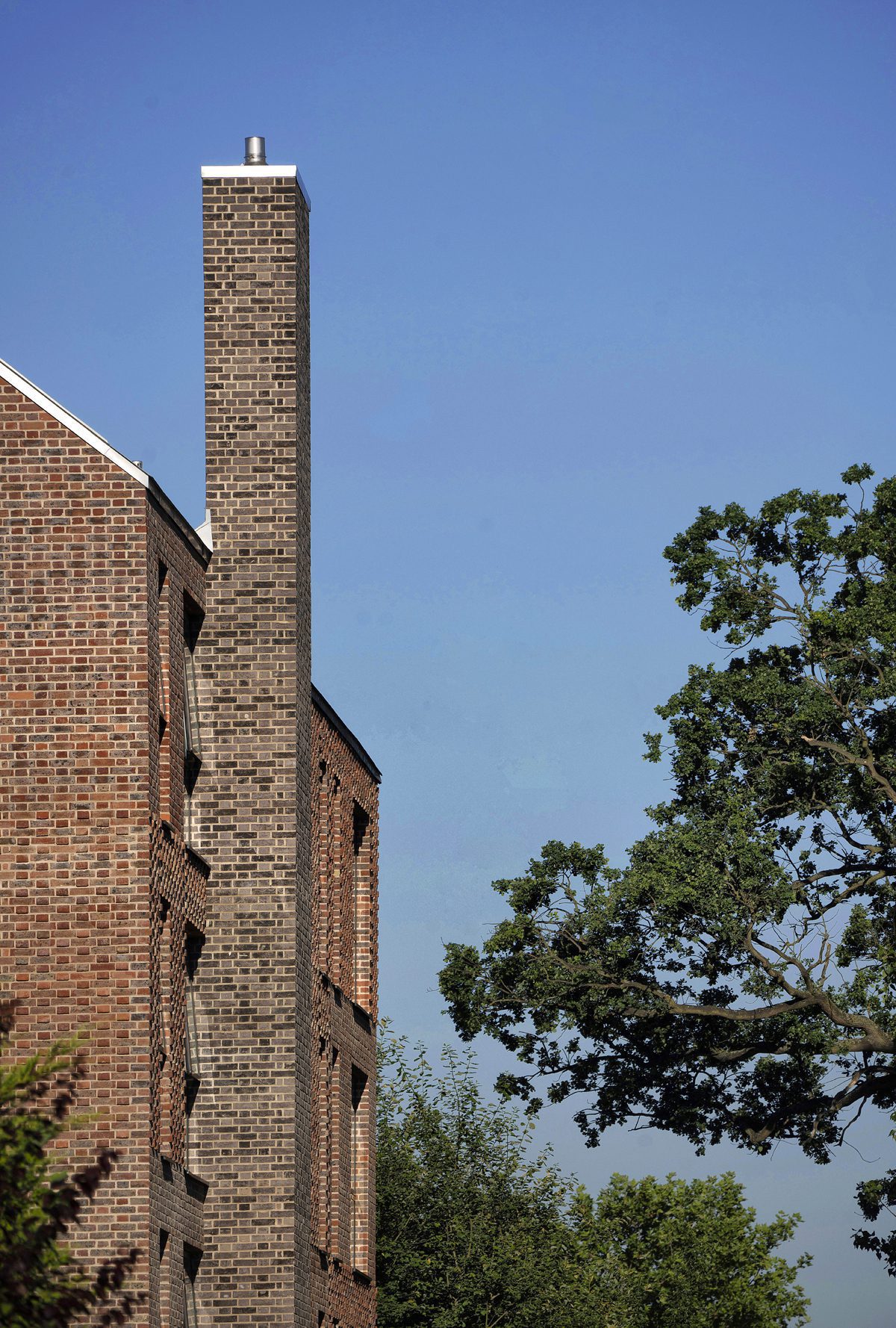Community and communality drive Coffey Architects’ design of a retirement housing complex in Surrey
Communality and community are the main drivers of Coffey Architects’ design for a retirement living complex on the edge of central Woking in Surrey. Moor’s Nook, which occupies the site of a derelict industrial laundry, provides 34 one- and two-bedroom flats arranged in a horseshoe-shaped plan that defines two two communal courtyards – one for the city and one for residents.
The city courtyard at the north entrance contains a flowering garden. Built-in benches on the pavement and under the building’s threshold “welcome neighbours, visitors and passers-by to sit and stay awhile”, says the architect. It is a ‘gift’ to the local community, in the sense that the architect and developer opted not to fully exploit the opportunity to build across the site. From this public courtyard, a brick colonnade guides visitors into the building in “a gentle transition from public to private space”. The ‘cloistered’ walkway connects the reception, staff offices, guest suite and the building’s single stair, as well as a lift for accessible access.
The design and location of the stair are intended to promote chance meetings. It leads to the first-floor common lounge and kitchen, where a shared balcony overlooks the south-facing courtyard.
All homes are accessed via this central garden. At ground level, residents have individual gardens. Above, apartments are accessed off wide decks with overhanging eaves, intended to “perform as extended threshold spaces, drawing residents into their own private spaces and creating intimacy and warmth, as well as plan separation”, says the architect. “These generous entries allow residents to comfortably access their homes while serendipitously encountering neighbours”.
Apartments are all dual-aspect, and those on the top floor have double-height ceilings with dual skylights.
The building’s form and material palette makes reference both to the industrial history of the site and to the prevalence of Arts & Crafts architecture in the surrounding area. Its massing is arranged so that its multiple segments “at a glance, look like traditional, single-family homes”, suggests the architect. “Delineated by individual pitched roofs, floor-to-ceiling windows and a classic brick palette, the ‘homes’ are multiplied across the building at various heights”. The building rises in height from the south, where it adjoins two-storey Victorian properties, to four storeys at the north-east corner, where it enjoys views across a cricket field and a village beyond.
Additional Images
Credits
Architect
Coffey Architects
Landscape architect
Camlins
Planning consultant
Barton Willmore
Structural engineer
Symmetrys
M&E consultant
Milieu Consult
Quantity surveyor
PMP Consultants
Main contractor
Stepnell
Client
PegasusLife




































